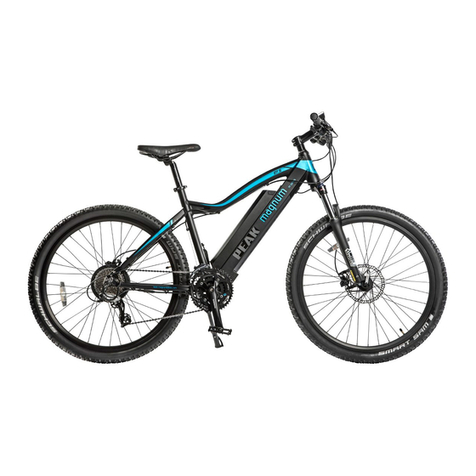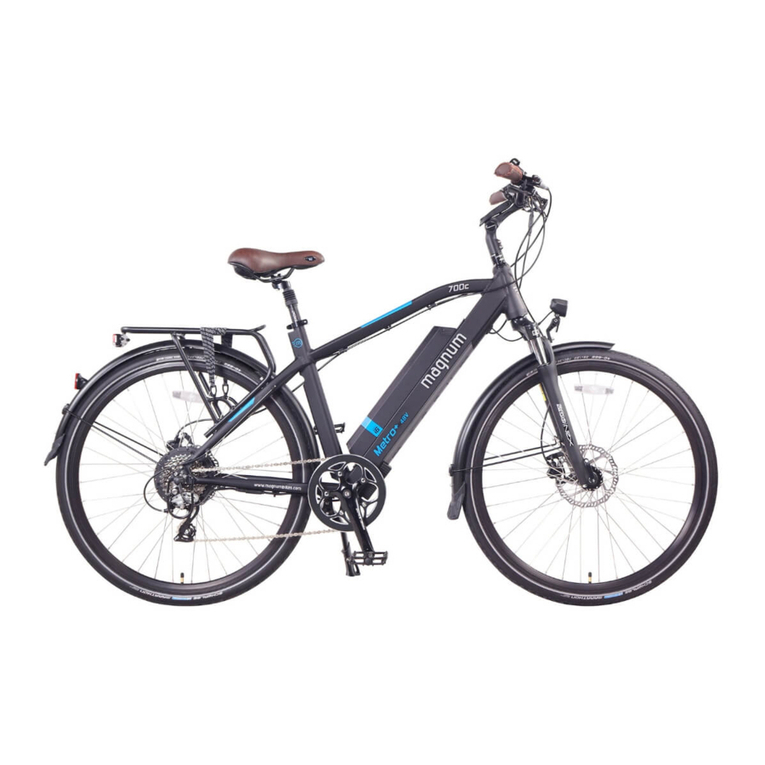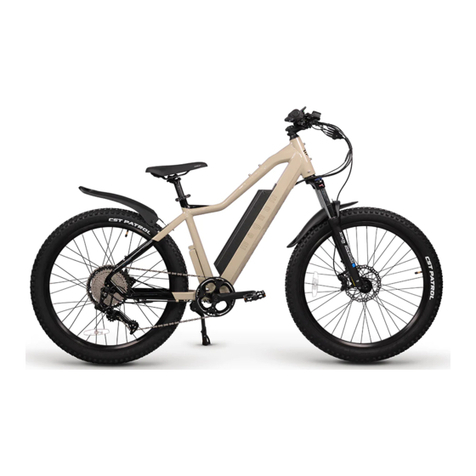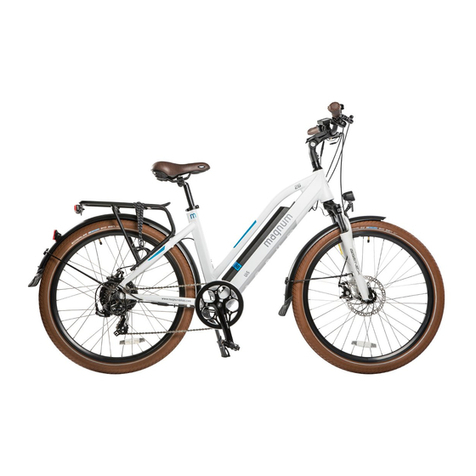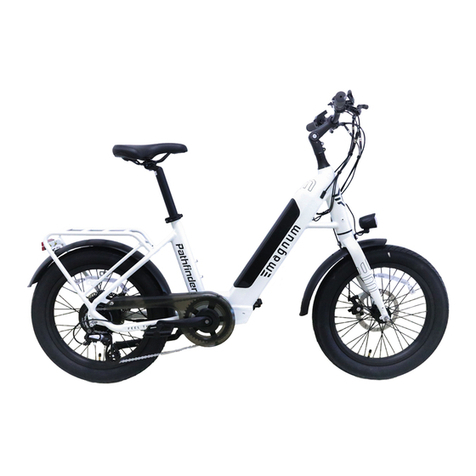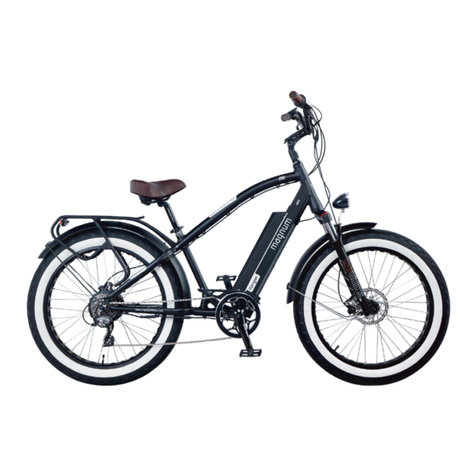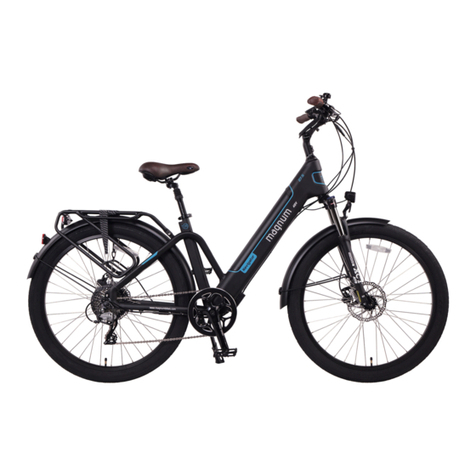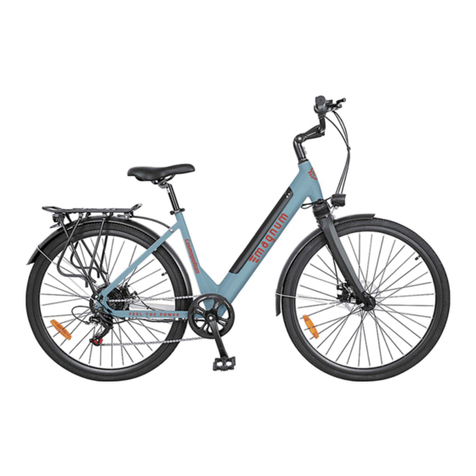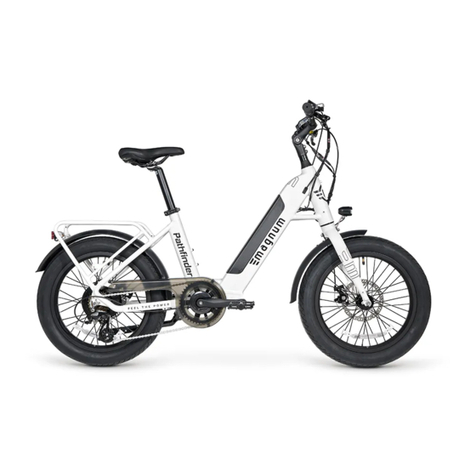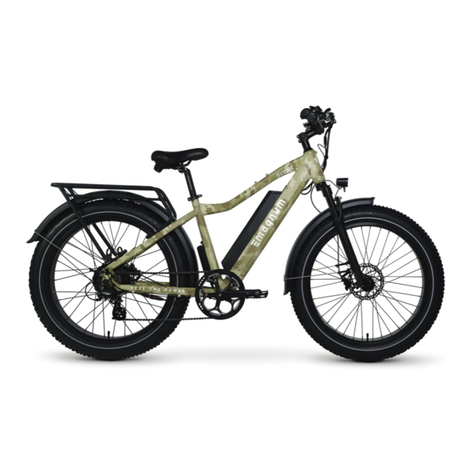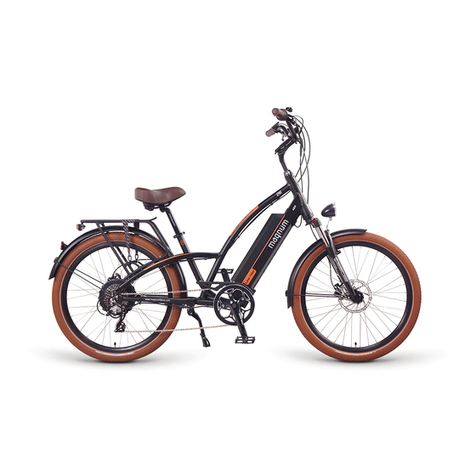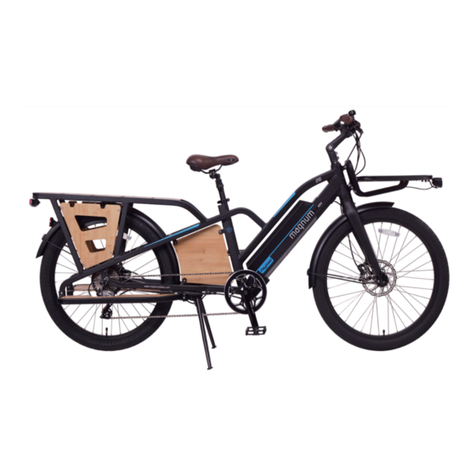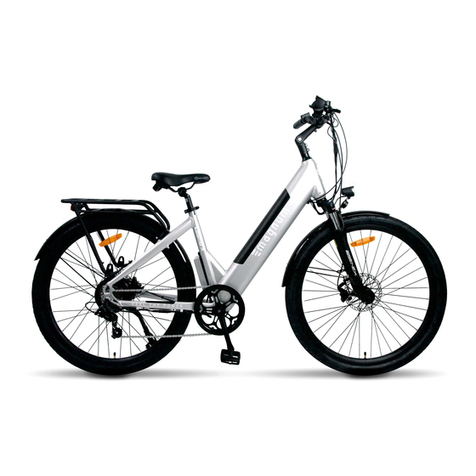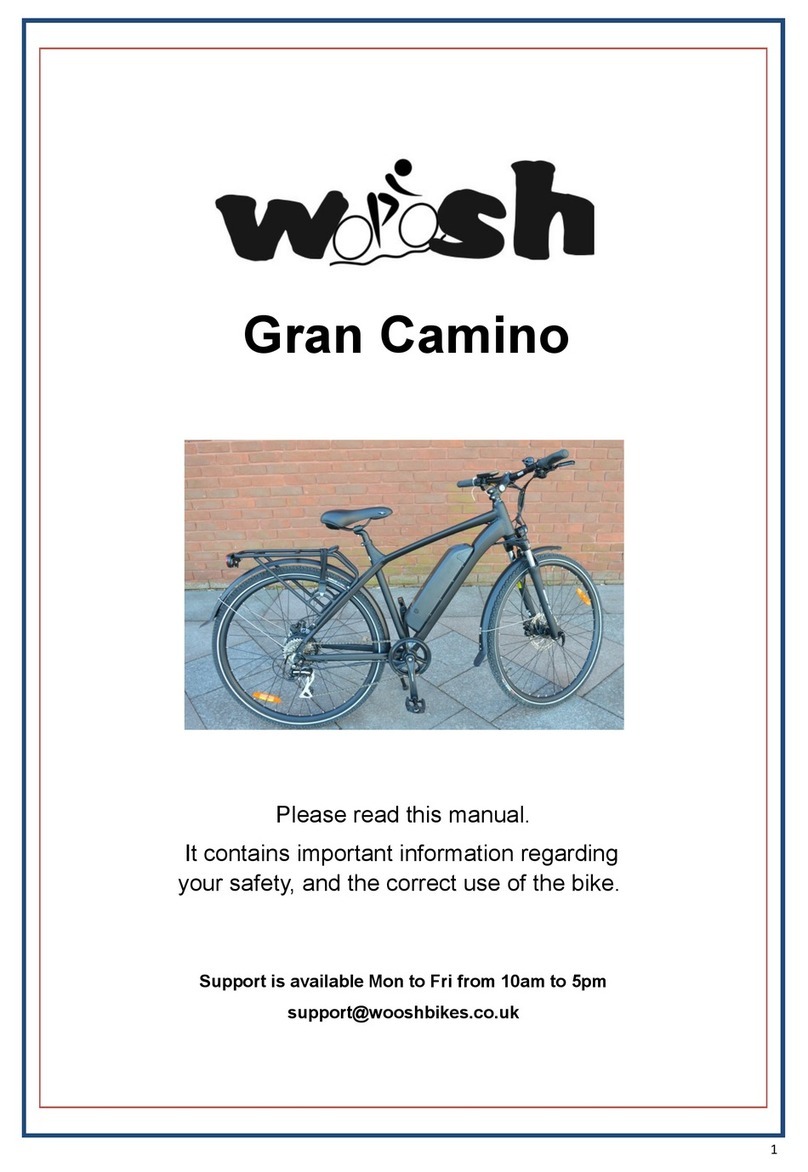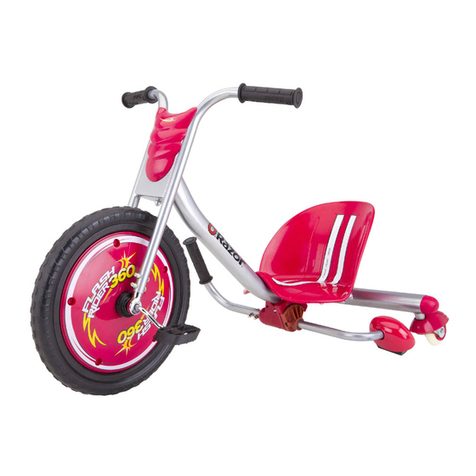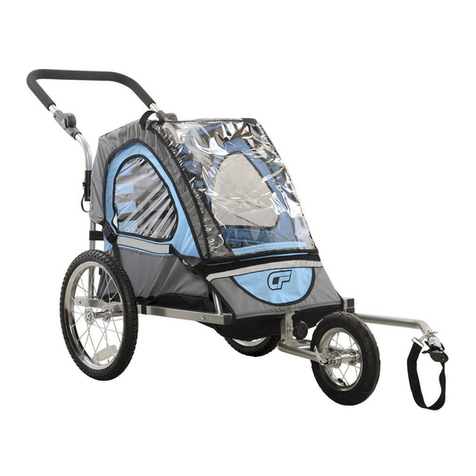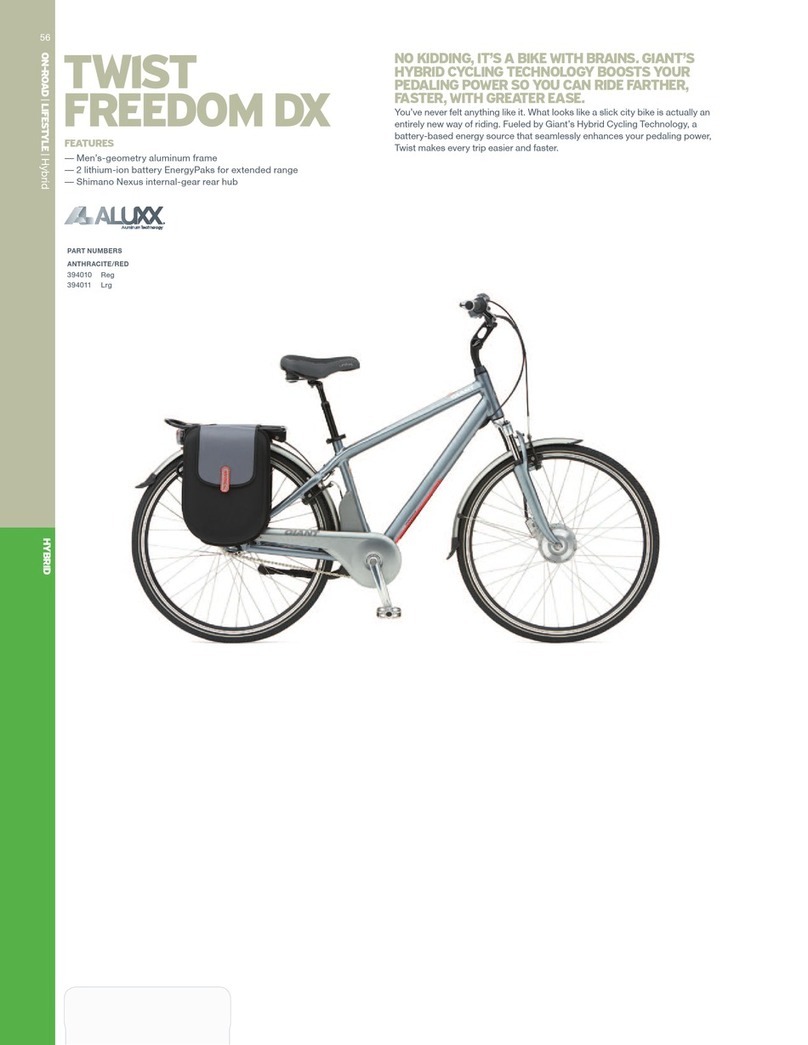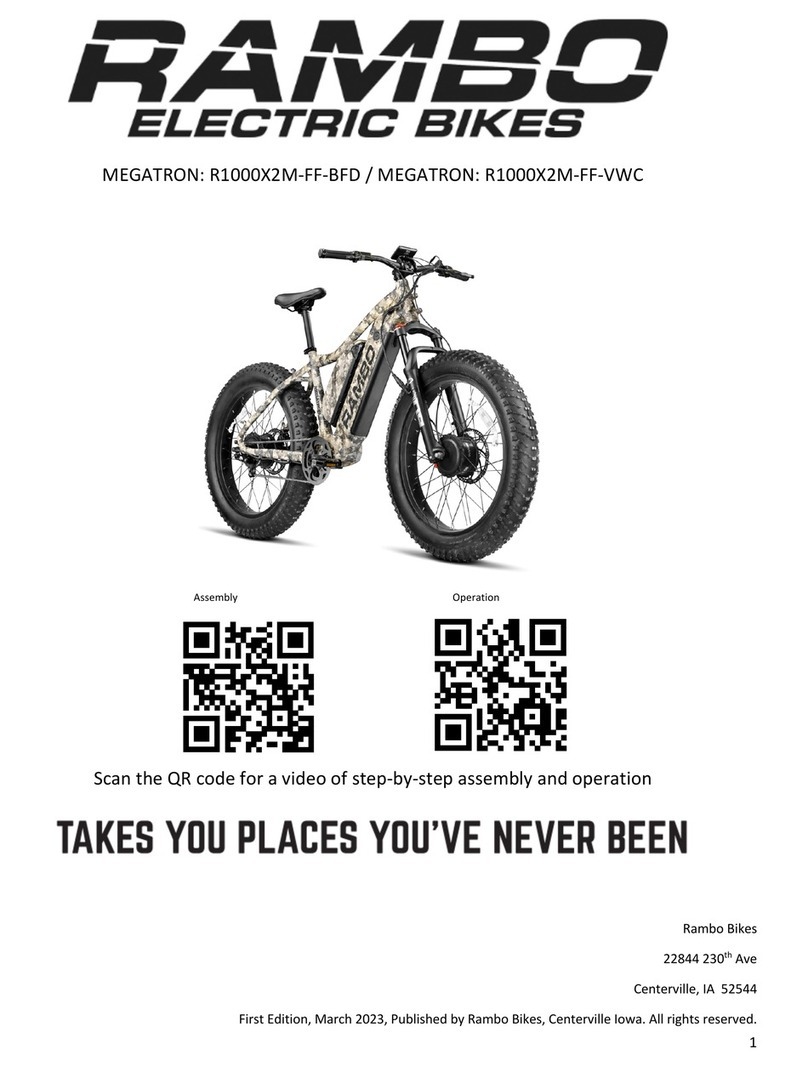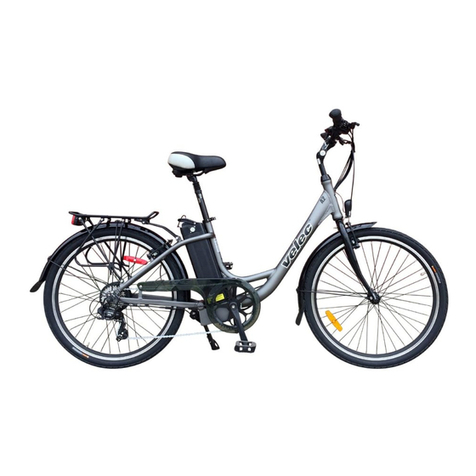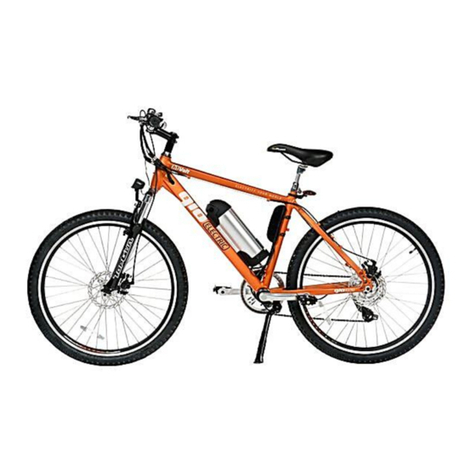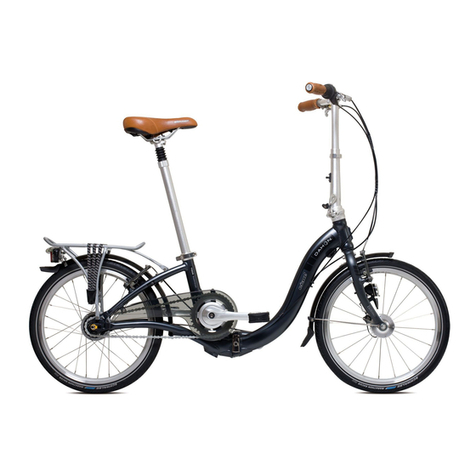
1. General Introduction
1.1 Welcome .................................................................................................................................................... 01
1.2 Use of Manual ............................................................................................................................................ 01
1.3 Service and Technical Support ................................................................................................................. 01
1.4 Bike Components ...................................................................................................................................... 01
1.4.2 E-Bike ...................................................................................................................................................... 02
1.5 Technical Data ........................................................................................................................................... 03
2. Assembly and Adjustment
2.1 Handlebar and Stem Assembly ................................................................................................................ 04
2.2 Assembly of the Pedals ............................................................................................................................ 05
2.3 Seat Posistion ............................................................................................................................................ 06
2.4 Saddle Height ............................................................................................................................................. 07
2.5 Saddle Adjustment .................................................................................................................................... 07
3. Battery and Charger
3.1 Overview .................................................................................................................................................... 08
3.2 General Remarks ....................................................................................................................................... 08
3.3 Installing and Removing the Battery ........................................................................................................ 08
3.4 Charging ..................................................................................................................................................... 08
4. Display ....................................................................................................................................................... 09
5. Recommendations and Maintenance
5.1 General Requirements ............................................................................................................................... 15
5.2 Maintenance Schedule .............................................................................................................................. 16
5.3 Denition of Tampering and Recommendations ..................................................................................... 17
6. Warranty .................................................................................................................................................... 18
Contents
